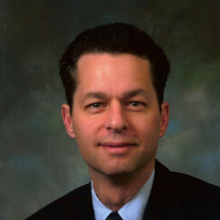AME Seminar: Greg Burton

Thursday, December 1, 2022 - 4:00 p.m.
Greg Burton
Lawrence Livermore National Laboratory
"Large Eddy & Direct Numerical Simulation of Unsteady Hypersonic Flows Coupled to Aeroshell Damage Using the MARGOT Code"
AME Lecture Hall, Room S202 | Zoom link

Abstract: Excepting propulsion and gravity, the performance of any aerospace vehicle is determined solely by the interaction of its aeroshell with the surrounding flow. Flight velocities above Mach 5, particularly in the denser atmosphere below 150,000 feet, produce mechanical and thermal stresses at the aeroshell surface that far exceed those generated by slower flows. Across much of this flight domain the boundary layer may be turbulent, enhancing by an order of magnitude or more the thermal and aerodynamic stresses experienced by the vehicle. If the aeroshell is damaged, it may pyrolyze even at moderate hypersonic velocities, sending surface gases into the boundary layer, changing flow dynamics and potentially impacting vehicle performance. Such damage will likely trip or intensify turbulence, exerting a first-order impact on vehicle survivability. The nation has an interest in accurately assessing the vulnerability of hypersonic vehicles to damage and other transient effects.
Due to the unique physics and enormous scale ranges generated by turbulent hypersonic flows, accurately probing them to evaluate survivability characteristics remains among the most challenging problems in all the aerospace sciences. Flight tests and laboratory experiments can provide essential insights into these problems. However, the limitations of experimental capabilities in the regimes of interest suggest that these alone will remain inadequate to investigate the flow physics at the level of granularity needed to bound rigorously the performance metrics, like aerodynamic and thermal force distributions, that directly impact survivability. High-performance computing promises to fill this gap, if the requisite length and time scales can be properly resolved, the appropriate physics captured, and the sources of uncertainty rigorously quantified. Toward this end, the talk will give an overview of the new MARGOT code, developed by the Turbulence Analysis & Simulation Center in Livermore’s Computational Engineering Division (CED) to perform high-resolution, massively parallel, multiphysics large-eddy and direct numerical simulation of hypersonic flows and their interactions with aeroshell boundaries. The talk will also present a brief overview of the Nonlinear LES (nLES) method that is now being extended to compressible, supersonic and ultimately hypersonic flow regimes for use in the MARGOT code.
Bio: Greg Burton has over 20 years experience in the analysis and simulation of turbulent flows. He earned a Ph.D. in 2003 in aerospace sciences from the University of Michigan, followed by postdocs at Stanford’s Center for Turbulence Research (2003 – 2005) and LLNL’s AX Division (2005 to 2008). He returned to the CTR to serve as its senior fellow from 2009-2010. Since returning to LLNL in 2010, he has worked in the Computational Engineering Division where he continues to specialize in developing numerical methods for the simulation of turbulent mixing and reacting flows using large-eddy, direct-numerical and Reynolds-averaged Navier-Stokes techniques. He focuses particularly on problems involving hypersonic flows, small-scale mixing, vortex dynamics and buoyancy-driven instabilities using his Nonlinear LES method in massively parallel configurations. He also has a primary role in establishing and running LLNL’s Turbulence Analysis and Simulation Center (TASC), established in 2013, which specializes in applying advanced turbulence-simulation tools to a wide variety of turbulence, mixing and combustion-related problems encountered at LLNL and in industry.

